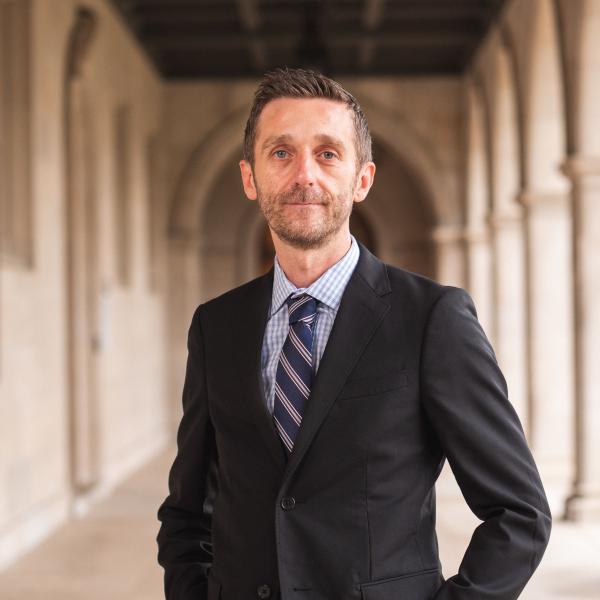Nicola Aravecchia's research interests include Archaeology of the late Roman period, early Christian art & architecture, late antique Egypt, and early Egyptian monasticism.
Prof. Aravecchia joined the departments of Classics and Art History and Archaeology in January 2018. He earned his doctorate in art history and master’s degree in ancient and medieval art and archaeology, both from the University of Minnesota. He is the Archaeological Field Director of the excavations at ʿAin el-Gedida, a fourth-century hamlet in Dakhla Oasis (in Egypt's Western Desert), and, since 2022, the Field Director at Amheida/Trimithis (also in Dakhla). He is also a Research Affiliate of the Institute for the Study of the Ancient World at New York University. In the Spring of 2016, he was the invited Chair of Coptic Studies at The American University in Cairo and in 2020 he was elected to the Board of Governors of the American Research Center in Egypt. In the Spring of 2021, he was awarded a Research Fellowship at Dumbarton Oaks, Washington, DC.
Prof. Aravecchia's research interests encompass the art and archaeology of Graeco-Roman and late antique Egypt. In particular, they focus on the origins and development of early Christian architecture in Egypt’s Western Desert. He is the main author of ʿAin el-Gedida: 2006–2008 Excavations at a Late Roman Site in Dakhla Oasis, Egypt (New York: ISAW/NYU Press 2018) and a co-author of An Oasis City (New York: ISAW/NYU Press 2015). He has also written articles and essays on related subjects, including early Egyptian monasticism.
At WashU, Prof. Aravecchia teaches courses on ancient art and archaeology and Classical languages. Previously, he taught at New York University, The American University in Cairo (Egypt), and Monash University in Melbourne (Australia).

